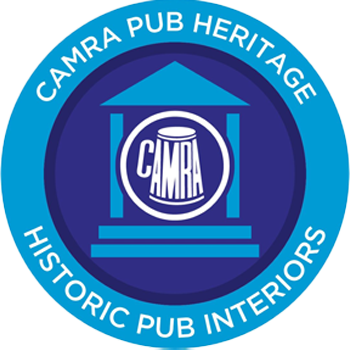This website is currently in beta. If you wish to go back to the current site please click here. To provide feedback or find out more about this site, please click here.


A spectacular Victorian pub built in 1856 and refitted around 1896 with an extraordinary set of fittings, now very rare survivors from the days when so many London pubs had small drinkers' compartments surrounding the servery (those at the Princess Louise, Holborn, marvellous as they are, are a twenty-first century reinstatement).
The central peninsular servery, complete with snob screens at one end, is surrounded by its five original compartments, each with its own entrance from the street, divided by wood and glass partitions, these punctured by low service doors for "pot boys" to slip through to collect drinking pots and glasses. The ornate back bar draws the eye up to the highly decorated ceiling and these, together with the intricate carving on the partitions, impart a rococo feel to the place. Light is provided by the magnificent full-height engraved bow windows.
The passageway and bar area to the side sport some delightful wall tiling and floor mosaics as well as a fireplace in which, in colder weather, a real fire burns. Beyond is the open kitchen and separate restaurant, the Formosa Dining Room. The full menu offered here is served in all areas of the pub itself, where sandwiches are also available between noon and 4pm on weekdays only. The food offering includes Sunday roasts but the pub is often packed with locals at Sunday lunchtime so be warned!
Unobtrusive screens offer sports TV which, this being Maida Vale, is often rugby or tennis.
The very special nature of this venue was recognised in 2022 when its listing was raised to Grade II*.
Artist and illustrator Edward Ardizzone drew "The Saloon Bar at the Prince Alfred" and his illustration is in Maurice Gorham's famous book "Back to the Local".
Historic Interest
Grade II* listed, Historic England entry 1066328.
Three star - A pub interior of outstanding national historic importance
Listed status: II*
A truly astonishing, unique survivor. The Prince Alfred has the only peninsula-style servery to retain all of its original surrounding drinking areas – no fewer than five of them, each with its own external entrance. The building went up in about 1865 but was given a complete refit around 1898. Outside one can see the exposed ceiling on the ground floor and how the curvaceous timber and glass screenwork has been inserted later, cutting across the patterned decoration. Note the tiles and mosaic in the left-hand entrance. The main space is divided up by timber and glass screens, all of them with a low service door for use by, say, pot-boys and cleaners. The smallest compartment has a set of snob screens, an extraordinarily rare survival. In the middle of the servery is a wonderfully tall carved fitment, which is secured to the ceiling by ironwork. All this late Victorian work gives the pub a delicate Rococo feel. A refit in 2001 transformed the character into a café-restaurant establishment at the rear with an over-prominent kitchen and dining room: the counter was refronted at this time.
The Prince Alfred is the best example now existing of how London pubs about 1900 were divided up into numerous separate spaces, each occupied by a particular group of individuals and social groups. The layout of many small drinking compartments is a style also seen at the Argyll Arms, Soho, London W1, Princess Louise, Holborn, London WC1 and Salisbury, Covent Garden, London WC1.
Outside, the Prince is nothing terribly exciting – a three-storey Italianate building in keeping with its surroundings – but inside shows to perfection how late Victorian drinkers liked their pubs. The building went up in about 1865 but was given a complete refit around 1898. From outside look carefully at the exposed ceiling on the ground floor and you can see how timber and glass screen-work has been inserted, cutting across the patterned decoration. Also note the tiles and mosaic in the entrance.
The interior has the only peninsula-style servery to retain all of its original surrounding drinking areas – no fewer than five of them, each with its own external entrance. They are separated by timber and glass screens, all of them with a low service door for the use of, say, pot boys and cleaners. The smallest compartment has a set of snob screens – swivelling glazed panels, which gave posh patrons a sense of separation from the serving staff. Other Heritage Pubs with snob screens are Bartons Arms, Aston, Birmingham; Lamb, London WC1; Posada, Wolverhampton , West Midlands; Starting Gate, London N22; Bunch of Grapes, London SW3; Crown, London N1; and Crown & Greyhound, London SE21 but these have been moved.
In the middle of the servery is a wonderfully tall, carved fitment, which is secured to the ceiling by ironwork. All this late Victorian work gives the pub a delicate Rococo feel. A refit in 2001 transformed the character into a café-restaurant establishment with over-prominent kitchen and dining room, and totally inappropriate furnishings in the historic part: counter re-fronted at this time.
This Pub serves 2 changing beers and 1 regular beer.
Prince Alfred, Maida Vale
Changing beers typically include: Redemption - Big Chief , Redemption - Trinity , St Austell - Proper Job